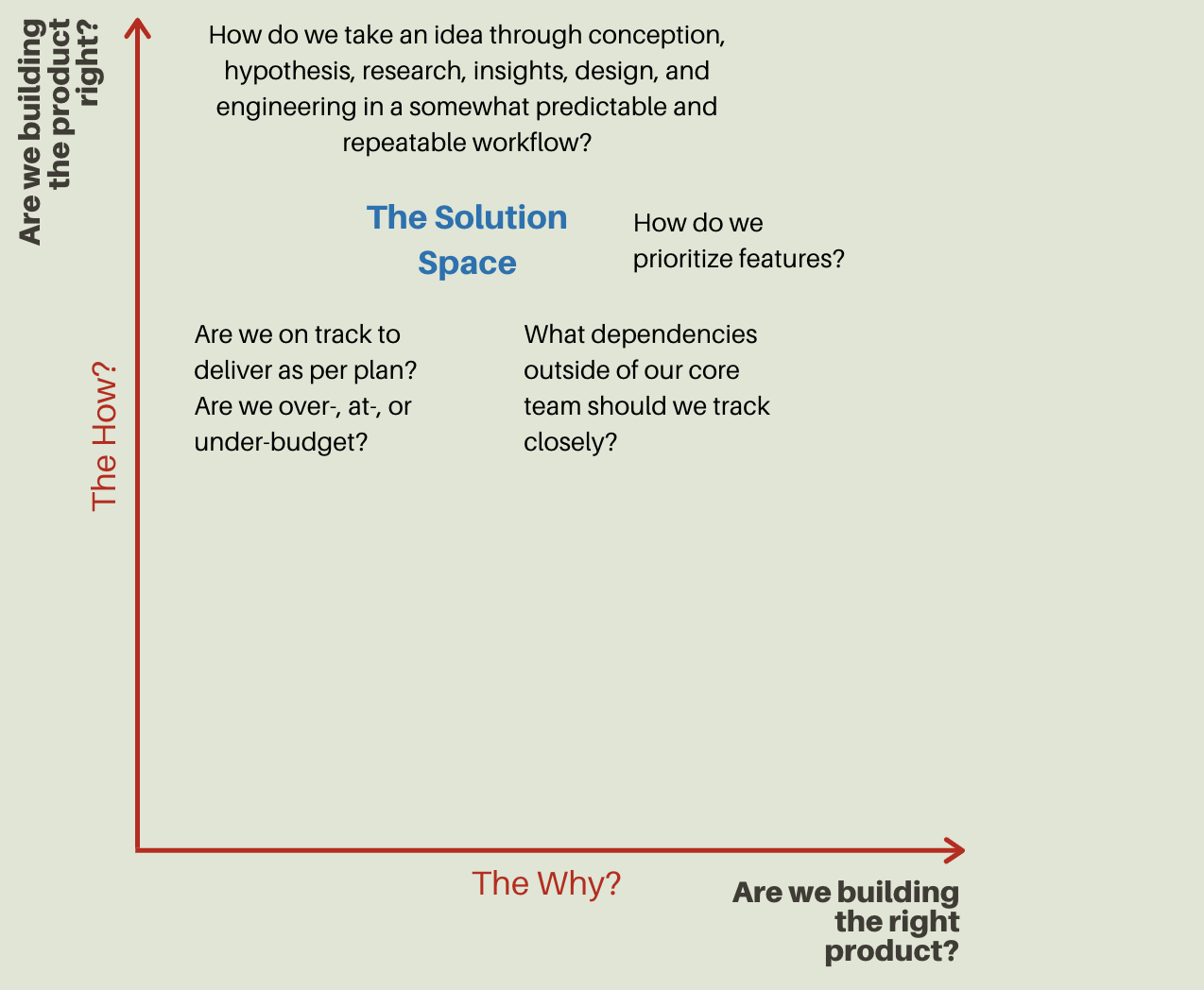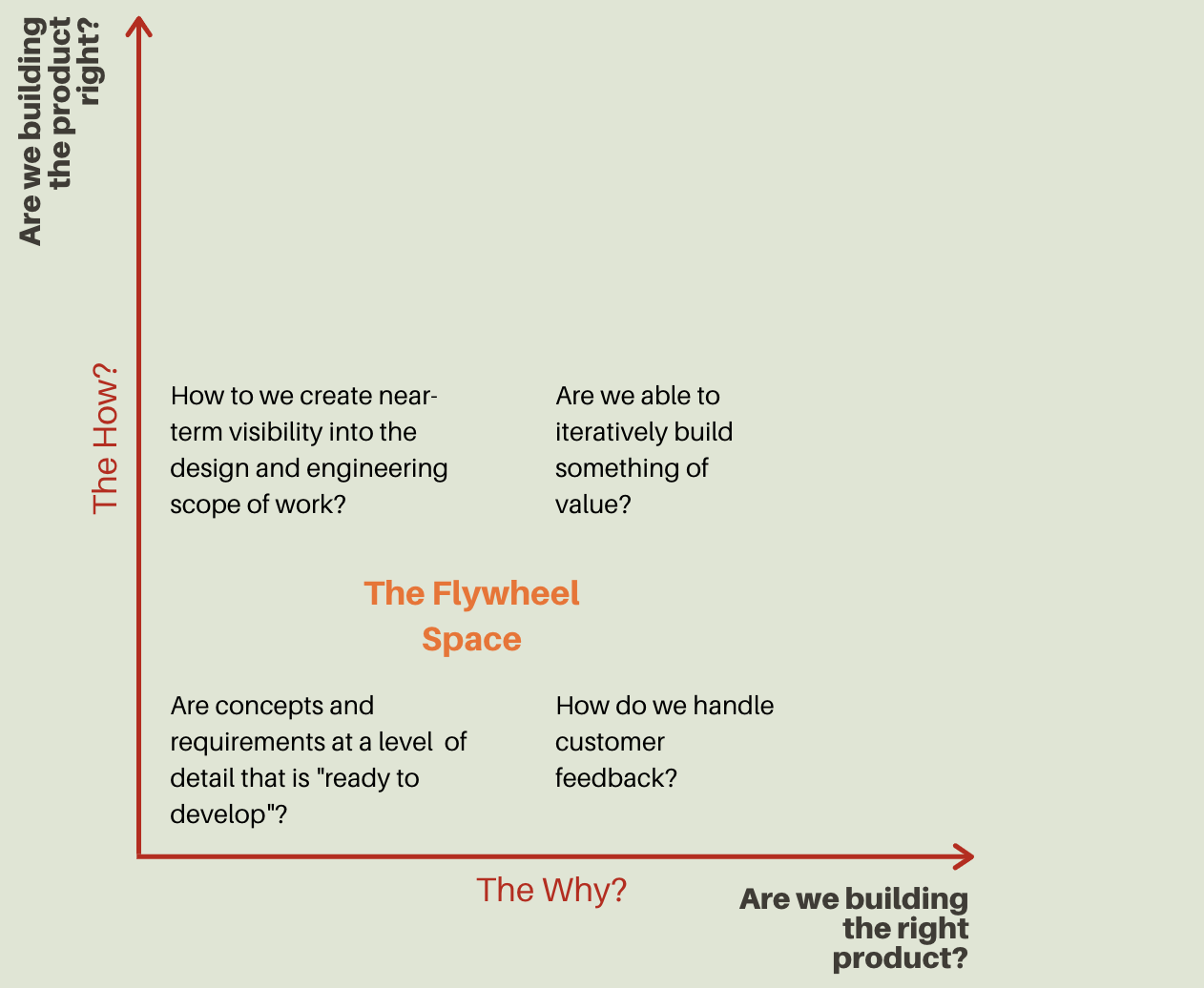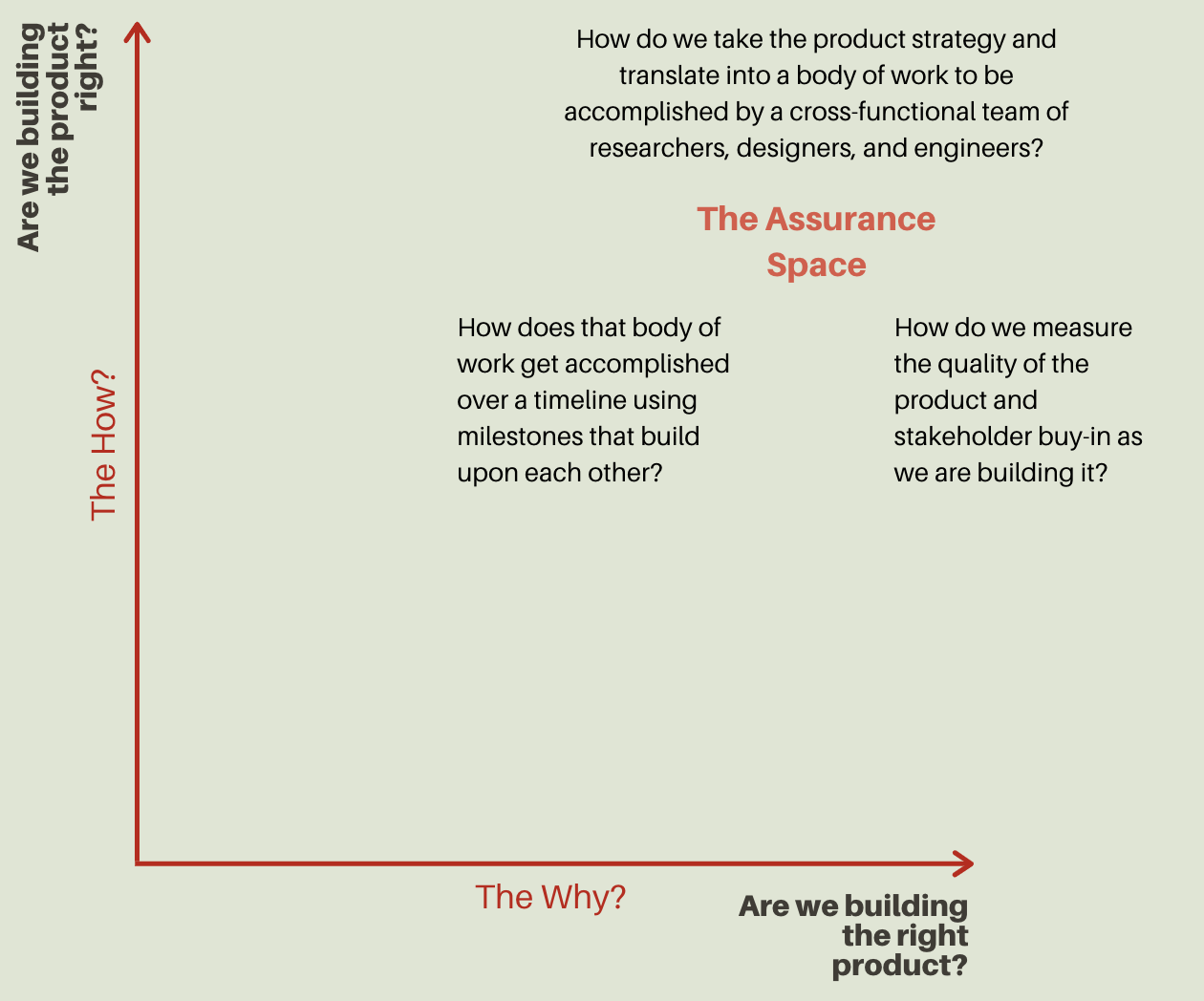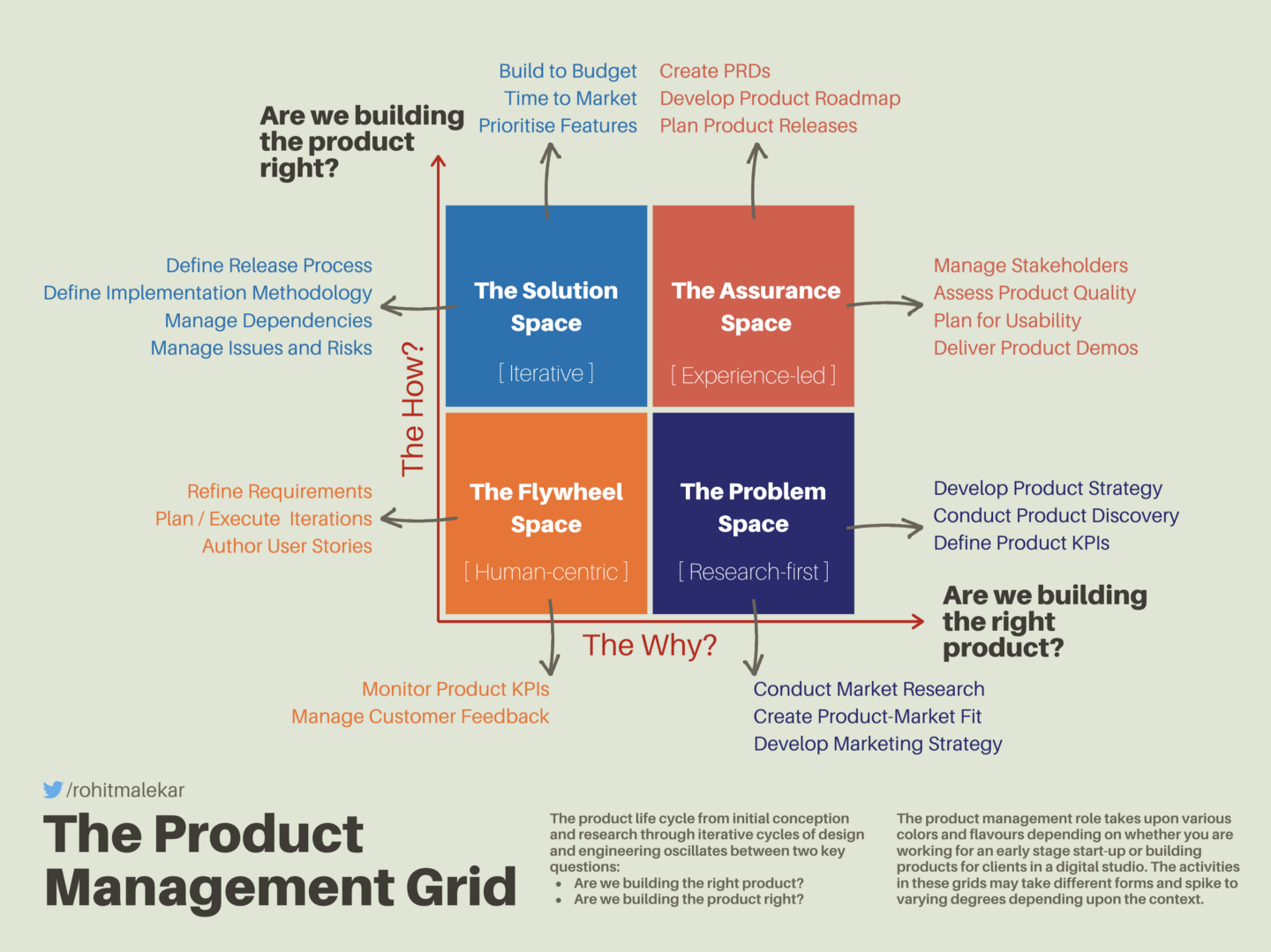I no longer assume I know what someone actually does when they say they are a Product Manager. This year, I had a chance to have over 40 or so 1:1s with folks from outside of work in different stages of their product management journey. No two roles were the same. I distilled our conversations into one picture in an attempt to put a unifying model to the various flavors of product management discipline out there.
The Approach
A significant amount of work that product managers do oscillates between two key questions:
Are we building the right product?
Are we building the product right?
Once you start plotting activities on a graph where these two questions form the axes, you observe a few organic clusters of tasks take shape.
1. The Problem Space
These activities are about the pursuit to find a problem worth solving, discovering the competition, defining what success would look like, and identifying ways to market the product once it is successfully built.

2. The Solution Space
The guardrails to execute to plan are established in the solution space by a creating predictable process to build the product, even if the end-goal may keep evolving over multiple iterations.

3. The Flywheel Space
Like a flywheel that may need a few initial turns before gaining momentum, any product team coming together for the first time needs to establish the rigor of execution in this space before scaling to deliver meaningful outcomes.

4. The Assurance Space
The Assurance Space integrates the problem defined in the product strategy with the process to build the solution. The intent is to assess progress for building a quality product experience over a pre-meditated roadmap.

Putting It All Together
The following view represents some familiar sets of tasks that help answer the questions discussed so far.

Depending on the context some of these activities will be more critical than others. Also, the intent here is to show the impact a product manager needs to have, directly or indirectly. In a sufficiently complex environment, the product manager should ensure the right mix of support system in the form of business analysts, product analysts, scrum masters, and even project managers who can be responsible for some of the day-to-day operations.
However, the product manager should be the person accountable for the eventual outcome. For example, if the user experience is disjointed due to lack of usability testing, or if the product negatively impacts the business KPIs, or if overheads in design to engineering workflow lead to slippage in a market release, the product manager is the accountable person.
How do you use this information?
If you are trying to break into a product management career:
Start with one of the quadrants and go deep before going broad. I would suggest the flywheel space — early hands-on experience to plan and run design and engineering iterations will make you a better product strategist later.
No matter how great the product strategy is or how awesome the engineering stack is, the foundations of a scalable product are laid in the trenches by collaboratively ensuring a transparent, predictable, and repeatable workflow from conception to design to engineering.
If you are attempting to switch your role from a project manager to product manager:
Shift your focus from the ceremonies and rituals of project management to the rigor of product thinking. This implies a relentless focus to use research and data in the context of the user’s mental model, stated and often, unstated needs.
It includes the responsibility to define and execute a research-first, human-centric, and iterative approach for a well-defined user need combined with a drive to measure success against a business metric.
If you are a leader owning a portfolio of products:
The same grid can be extended at a higher granularity at a portfolio level for taking steps to harmonize a group of products. In theory, an iterative methodology that allows for progress using known inputs and creates windows of opportunity to course correct when new information is available is conducive to building a product portfolio.
In reality, agile has become the rug underneath which transformation programs hide the delayed decisions that are critical for the experience, business, and technology scaffolding needed to support the implementation.
If you are an employer posting a job for a product manager:
Define the title as it may fit your organization, but you owe clarity to the candidates in the job description of what areas of product management you are seeking to have an impact.